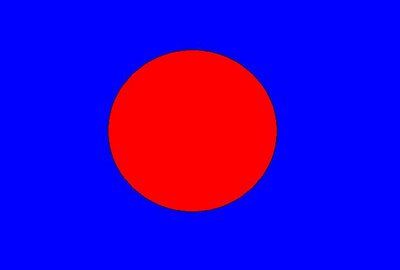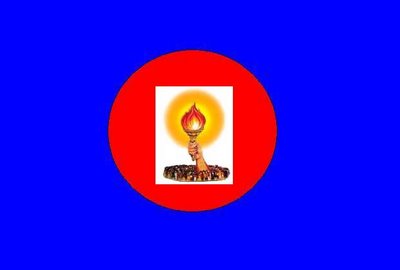 Janata Dal Constitution
Janata Dal Constitution (August 8, 2005)
If all communist parties are going to become one, as they should, I think all the other parties in the ring should unify and become one, namely the Nepali Congress. Unification is easy. All you have to do is hold a convention. You get to keep the party name, and get rid of the party constitution, and adopt this one:
Janata Dal Constitution. The democratic process decides all leadership questions. You start from scratch.
Ha, a two party system in Nepal, Nepali Congress, Nepal Communist Party.
The Madhesis are going to have to get one person, one vote democracy for this to work. One parliamentary seat for every 100,000 people. One wada for every 1,000 person.
But I am all for it. For now it feels a little too conceptual, a little too imaginative. It is hard enough for the communists to get their act together. But if they manage to do it, the rest of the parties are going to come under immense pressure. And if they don't all become one party, that unified communist party is going to rule Nepal for at least a decade.
If Nepal were to end up with a two party system, that sure will make the idea of direct elections for president more appealing. One would end up a left of center party, another would end up a right of center party.
But there are many roadblocks. The UML might not be interested. The numerous warlords in the many small parties might not want to give up their little league fames. But even if this does not go through, the Maoists stand to benefit. This stand for unification will help them poach UML workers across the country. You really do have to admire the Maoists' tendency to take initiatives. They are more likely to act. Girija is more likely to react, and more often than not, the reaction is to create enormous resistance to new, progressive ideas.
But at this point this whole unification talk does feel like an academic exercise.
The Idea Of One Communist Party In Nepal
प्रस्तािवत संिवधान
Janata Dal Constitution
New Flag For Nepal: Blue For Peace, Red For Prosperity
Republic Of Nepal Flag



The communists should get rid of the hammer sickle red flag. They should redesign for the new century. They should become communists for the information age. Blue for peace, as in all your agitation and political work will be peaceful. Red is for vitality, prosperity, in that you are not opposed to wealth creation, on the other hand you think you can deliver double digit growth rates. And the fist is to suggest the less well to do, the workers need to stay united to strike a better bargain, to stay empowered. It also suggests adequate attention has to be paid to human capital.
The Congress flag would have a mashal instead of a fist. You are saying much of the above, but you are also saying don't make the mistake of thinking mindless shows of unity will do all the trick. You need knowledge, innovation, entrepreneurship. You need to light the lamp.
Of course the fist or the lamp would not look rectangular. I just did not any better with my Paint software.
Can't Have Cow For National Animal
Nepal became a secular country, remember Bahuns? Also national color simrik? Give me a break.
In The News
Government starts preparations for providing citizenship certificates to 3 million NepalNews
Oli raises strong objection against Bhutan PM's remarks
NRNs’ fail to get voting rights
Gurung and Yadav nominated for EC membership
Eight-party leaders visit Nepalgunj; normalcy returns
Nepal, China to study if Everest is still growing Times of India, India
NEPAL: Government steps in to stop Nepalganj violence Reuters AlertNet, UK
Nepal: A year when people buried the monarchy Telugu Portal, India Gyanendra undoubtedly dominated 2006, despite his ouster as head of government early this year. ..... grabbed the headlines worldwide in February 2005 by seizing power with an impeccably planned bloodless coup ..... ruled with the help of a coterie and an army of astrologers ignoring public opinion at home and abroad
Bhutan FM's Remark Draws Flak; Nepal Rejects Allegations Himalayan Times, Nepal
Oli raises strong objection against Bhutan PM's remarks Nepalnews.com
Shaking Up Bhutan Foreign Policy In Focus In December 2006, King Jigme Singye of Bhutan made headlines by suddenly abdicating and handing the throne to his Oxford-educated son, Jigme Geshar. He has also pledged to grant some measure of democracy to his subjects by holding democratic elections in 2008...... Bhutanese refugees living in camps in Nepal have not been impressed. ..... To Ratan Gajmer, one of their leaders, the king's announcement was "just pulling wool over the eyes of the international community about democratization and election propaganda." ..... Bhutanese citizens have been clamoring for democracy and freedom. .... The Bhutanese king appears to have wanted to grant his people limited democracy before they, like the Nepalis, actually take to the streets. His plan is to introduce a guided, two-party democracy under a new constitution that has long been in the making. ...... the king hasn't said anything about the resolution of the refugee problem, which belies Bhutan's promotion of itself as a tranquil and happy kingdom. ...... The dragon kingdom of Bhutan boasts of having a high "gross national happiness." Many Bhutanese do not share this opinion. They contend that a country with one-sixth of its population living abroad as refugees could not have a high level of happiness. .... Tek Nath Rijal was once King Jigme Singye’s advisor. ..... First the government in Thimpu restricted the Nepali community's rights to movement and property. Then it imposed the Tibetan ruling clan's language, dress, and culture on other communities, which constitute almost two-thirds of Bhutan’s population. ....... Protests broke out in the 1980s, and Thimpu cracked down hard. The government changed the citizenship law in 1988, stripped the protestors of their citizenship, and evicted them from the country. Since the majority of the evictees were of Nepali origin, they went to Nepal, and others followed suit under duress or out of fear. ........ 120,000 refugees--almost one-sixth of Bhutan's population--live in Nepal. ....... Many have lived there for 16 years. ...... Local Nepalis blame the refugees for depressing local wages, damaging the environment, and promoting social ills around the camps. The international community has begun to show donor fatigue over their maintenance. ........ more than 76% of refugees were eligible to return without further documents or investigation. Bhutan has evaded formal ministerial talks ever since. ......... The United States announced in October that it would accept 60,000 Bhutanese refugees from the UNHCR-administered camps over a 3-4 year period. Bhutanese refugees have appreciated this humanitarian gesture. .......... refugees who choose to settle in America might finance a robust anti-monarchy campaign in Bhutan ........ 21 million refugees around the world, most of them living in poor countries ...... some educated and skilled refugees are happy that they will be able to chase the American dream ...... the majority is worried that a selective relocation will dash their unmitigated hope to return home and build a democratic society in Bhutan
The Progress of Peace In Nepal OhmyNews International, South Korea





